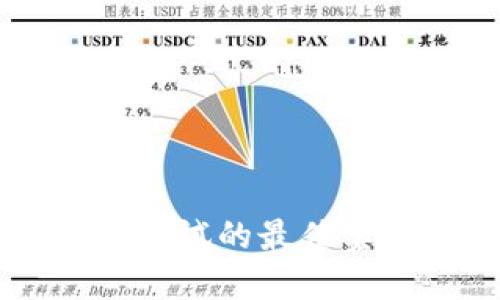TPWallet接口调试的最佳实践与解决方案
引言
在数字货币和区块链技术快速发展的背景下,各种钱包服务及其接口的稳定性和可靠性显得尤为重要。TPWallet作为一种流行的区块链钱包,提供了多种功能接口,供开发者与用户交互。然而,有时在使用TPWallet的一部分接口时,可能会遭遇调试困难和连接问题。本文将围绕TPWallet接口调试中的常见问题和最佳实践进行详细探讨,以帮助开发者解决相应的技术难题。
什么是TPWallet?

TPWallet是一个支持多种数字资产的区块链钱包,它提供了一系列接口供开发者使用,方便进行资产管理、交易提交和查询等操作。TPWallet具备用户友好的界面和强大的功能,广泛应用于去中心化金融(DeFi)应用、数字资产交易和钱包服务。为了保证用户可以顺利使用这些功能,开发者需要全面了解TPWallet的接口设计和运行机制。
TPWallet接口调试不通的常见原因
在调试TPWallet接口时,开发者可能会遇到各种问题,导致接口无法正常使用。以下是一些可能的原因:
- 网络有时候,网络连接不稳定,会导致API请求失败。在检查网络时,请确认服务器和客户端之间的连接正常。
- 参数传递错误:调用接口时如果传递了错误的参数或缺少必要的参数,接口也可能返回错误。
- 权限设置不当:TPWallet通常会根据API密钥配置权限,如果未授权或权限不足,可能导致接口无法访问。
- 版本不兼容:在使用TPWallet的不同版本时,某些接口可能已经被更改或弃用,需要查看最新的文档以获取支持的接口列表。
解决TPWallet接口调试问题的步骤

在面对无法调试TPWallet接口的问题时,可以遵循以下步骤进行处理:
- 检查网络连接:确保服务器的网络是稳定的,可以使用Ping命令测试TPWallet服务器是否正常。
- 验证API参数:阅读TPWallet的API文档,仔细检查你传递的参数是否符合要求,确保参数名称和值都是正确的。
- 检查权限设置:确保你使用的API密钥拥有调用接口的权限,并在TPWallet的管理后台确认隐私和安全设置。
- 调试工具的使用:使用Postman或Fiddler等API调试工具可以方便地模拟请求和调试接口,帮助快速找到问题所在。
如何提高TPWallet接口的调试效率
为了提高TPWallet接口调试的效率,开发者可以考虑以下几个建议:
- 完善的文档:在开始使用TPWallet接口之前,仔细阅读相关的API文档,做好准备工作,了解各个接口的功能、参数和返回值。
- 模块化开发:将不同的功能模块拆分为独立的接口,以便逐一验证和调试,避免一次性调用中过多变量。
- 利用日志记录:在API请求和响应中添加日志记录,以便后续检查和分析调试问题的根源。
- 定期更新环境:保持开发环境的更新,确保使用的SDK、库和TPWallet版本都是最新的,以便获得更好的兼容性和安全性。
常见问题解答
以下是与TPWallet接口调试相关的一些常见问题,为开发者提供进一步的帮助和指导:
Why can’t I connect to the TPWallet API?
There's a multitude of reasons why a connection to the TPWallet API might fail. Historically, many developers first encounter issues due to network instability. This could be an intermittent connection issue or a more systemic problem with your local network or firewall settings. It is advisable to test the API endpoint using another network or device to rule out any specific configurations. Additionally, ensure that the URL you're using to connect is correct and that it hasn't changed, as API endpoints can update with new versions of the software.
If network issues are concluded as not being the problem, it's crucial to review the API documentation for any recent changes in endpoints or required parameters. TPWallet may have updated its API structure, rendering older methods obsolete. Lastly, confirm that your API key has permissions activated for the methods you’re attempting to access; lack of permissions can often lead to connectivity issues.
What parameters are mandatory when calling TPWallet interfaces?
Each API method in TPWallet may have different parameter requirements. Generally, essential parameters include your API key, the action you wish to perform, and any relevant identifiers for the wallet or transaction. Always refer to the specific method's documentation to confirm which parameters are mandatory. Omitting key parameters can lead to undefined responses or errors during execution. Furthermore, parameter data types should also match the expected formats; for instance, numerical values should not be passed as strings.
How can I check for errors in API responses?
Error handling is crucial during API development. Typically, TPWallet returns an error object in its API response when an issue occurs. Developers must implement effective logging to capture these responses, which contains codes and messages to indicate what went wrong. Common error codes include permission issues, validation failures, or processing exceptions. By checking these error codes against the model provided in the API documentation, developers can gain insight into issues and take appropriate corrective actions. Moreover, proper error handling ensures a smoother user experience by providing feedback and resolutions within the application.
What is the best practice for securing my TPWallet API keys?
API key security is paramount to safeguard your application and users. The best practices include never hard-coding API keys in your application; instead, use environment variables to store sensitive information. Additionally, restrict API key usage to specific IP addresses and limit permissions to only what's necessary to further mitigate risks. Regularly rotate your API keys and monitor usage logs for unusual activity. Should a key seem compromised, it should be revoked and replaced immediately. Security should be an ongoing practice, including keeping your libraries and dependencies up-to-date to avoid known vulnerabilities.
How often does TPWallet update its API? What should I consider?
TPWallet periodically releases updates for its API to enhance functionality, security, and performance. It's essential to monitor TPWallet’s official communication channels, such as newsletters or documentation updates, to stay informed about these changes. Developers should test their applications following an update to ensure compatibility and identify any deprecated or altered functionality. Implementing automated tests can also assist in maintaining application stability in the face of changing APIs. Notifications about major version changes generally indicate breaking changes, necessitating especially vigilant review of the documentation.
What community resources are available for TPWallet developers?
For developers working with TPWallet, a supportive community can be invaluable. Engaging in forums like Stack Overflow, GitHub, or the official TPWallet discussion boards can provide collaborative troubleshooting support and valuable insights from experienced developers. Often, common issues may have been encountered and documented by fellow users, enhancing your learning and solution-finding process. Furthermore, contributing to community discussions regarding known bugs or feature requests can help prioritize enhancements to the platform, leading to a collective improvement in user experience.
总结
TPWallet的接口调试虽然可能遇到诸多挑战,但通过掌握调试策略、了解常见问题以及利用社区资源,可以有效地解决这些问题。开发者应该时常关注相关文档更新,提高自身的应对能力,以确保TPWallet接口的稳定性和安全性。唯有如此,才能为用户提供更流畅的体验和更高效的服务。
